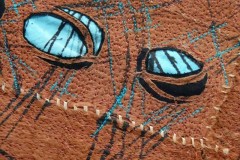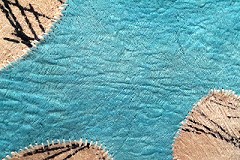How is bark cloth made?
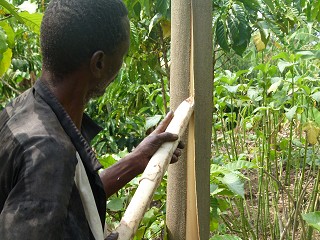 Removing the bark
Removing the bark
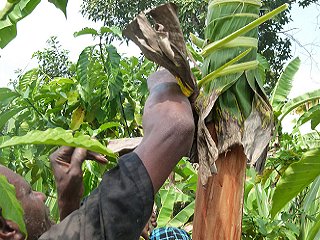 Protecting the tree with banana leaves
Protecting the tree with banana leaves
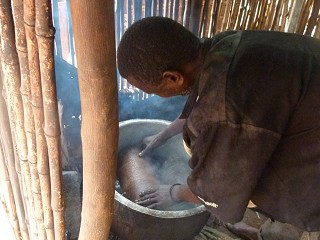 Softening the bark
Softening the bark
It requires a master craftsman with knowledge and experience to carry out this skilled technique. The inner bark of the Mutuba Tree is harvested during the wet season, when the leaves begin to turn a yellowish colour. A cut is made around the top and bottom of the tree and it is carefully sliced down the full length of the tree. The bark is peeled off in one full piece from the base upwards, with the aid of a stalk from a banana leaf.
The next important stage is to immediately protect the tree, by wrapping it with freshly picked banana leaves, bound with raffia grass. The trunk can sometimes be treated by smearing the exposed trunk with cow dung before wrapping it. It is left like this for some time and then unwrapped, leaving it to regenerate. This process can happen with one tree annually for up to 60 years or even more. The removed bark is rolled and soaked in hot water for about 30 minutes to soften it.
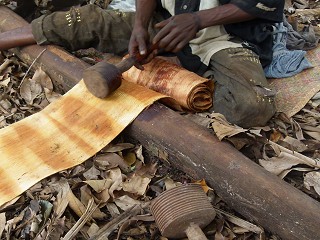 The start of the pounding process
The start of the pounding process
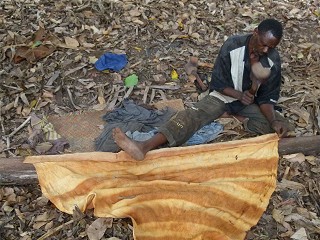 Stretching the cloth
Stretching the cloth
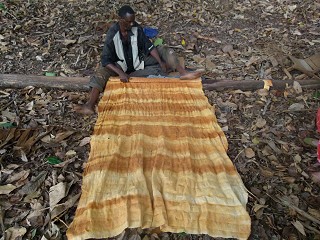 Nearly finished
Nearly finished
Then it is ready for pounding with grooved wooden mallets, a laborious process which is best carried out in an open wooden shed to prevent the sun from drying out the bark cloth too quickly. The master craftsman is required to exercise the best beating rhythm to beat a cloth as this is essential for the production of high quality bark cloth. This pounding technique gradually increases the size of the cloth from an original width of approximately 18 inches to between two to three metres. The bark cloth is then sun dried and will turn to a gorgeous brown colour, although the shades of brown can vary depending on several factors, such as type of tree, age of tree, sun and rain, area where the trees grow, etc.
The trunk of the tree is also of great use in making mortars (ekinu), beer brewing vessels (elwato), furniture and for firewood and charcoal, while the leaves are useful for animal fodder and soil enrichment.
